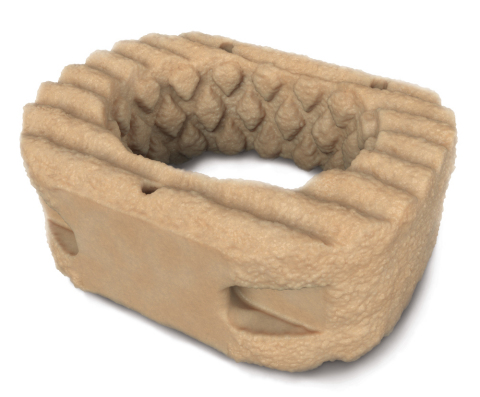RTI Surgical, a surgical implant company, launches its Fortilink-C IBF System with TETRAfuse® 3D Technology. The Fortilink-C system is the first of its kind to incorporate RTI Surgical’s TETRAfuse 3D Technology.
Three days ago, the company introduced TETRAfuse® 3D Technology while unveiling a 3D printed interbody polymer. Today’s Fortilink®-C IBF System is the first of its kind to incorporate RTI Surgica’s this technology.

The Fortilink-C IBF System
The 3D printed polymer-based is a cervical interbody device which incorporates macro, micro and nano-rough features on the entire implant surface— not just on the endplate surfaces. The Fortilink-C device aims at enabling bony ingrowth on all implant surfaces while maintaining radiolucent and bone-like mechanical properties that surgeons expect.
“TETRAfuse 3D Technology combines the best characteristics of titanium, allograft bone and PEEK – all in one package,” said Grigory Goldberg, M.D., an orthopaedic surgeon practicing in Princeton, N.J. “The Fortilink-C system represents a revolutionary new step in the future of spine surgery.”
“Fortilink-C IBF System demonstrates RTI Surgical’s commitment to advancing technologies and delivering innovative clinical solutions that meet the demands of our customers while improving the lives of patients,” said Camille Farhat, RTI chief executive officer. “This new innovative platform will have many derivative products, and this, in addition to the map3® Cellular Allogeneic Bone Graft and our comprehensive spine hardware portfolio, brings us a step closer to a complete offering.”

For further information about 3D Printing, follow us on our social networks and subscribe to our newsletter!





